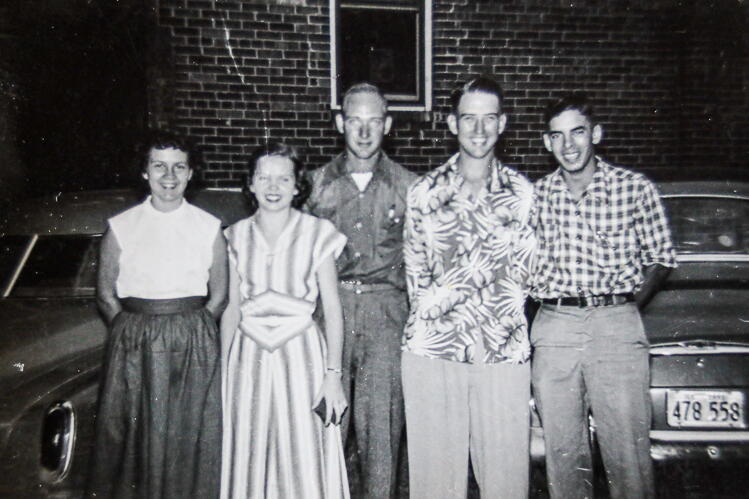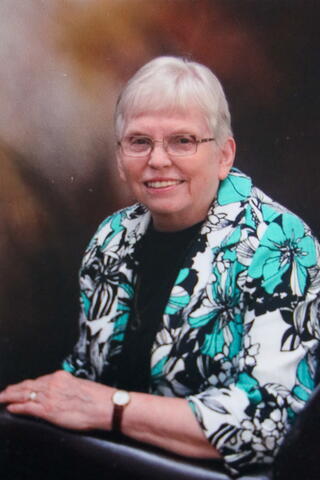How 4-H shaped a lifetime of service for Bea Bagby


For Beatrice H. Bagby, known to most as Bea, 4-H wasn’t just a club. It was a lifeline. A spark. A community. And ultimately, a calling.
Bea found Illinois 4-H in the wake of unimaginable grief. In May 1946, her mother passed away. Bea was just 12 years old.
“The day after her funeral, I returned to school — and so began the rotation of caregivers hired to restore some sense of ‘normal’ to my life,” Bea recalled. “But it wasn’t sustainable. My father couldn’t afford the help. My older brother and I tried to fill in the gaps, even though we didn’t know what we were doing. We were grieving and growing up all at the same time.”
Less than a year later, in 1947, Bea told her father they didn’t need to hire anyone else — she could do just as well. And they did. “We took over for ourselves,” she said.
And in the midst of rebuilding a new family rhythm, she discovered 4-H.
“At some point in 1947, I found 4-H — though I don’t remember how,” Bea said. “That summer, I gave a food demonstration at the McDonough County fair. As I was getting ready, another girl’s mother asked me if I needed anything, and I told her that I had forgotten an egg. She dashed out of the tent, returning from the chicken tent with the freshest of eggs just in time!”
It was the beginning of a seven-year 4-H journey in Mrs. Paul Hentges’ 4-H Club in Macomb that would shape the course of Bea’s life.
“I loved 4-H: the friends I made throughout the county and state, the unexpected experiences that I had, the things I learned, and how it broadened my life horizons. My future education and career were influenced by those early years in 4-H,” Bea added.
Illinois 4-H is the youth development program of the University of Illinois Extension, part of the College of Agricultural, Consumer and Environmental Sciences at the University of Illinois Urbana-Champaign.
Finding Purpose Among the Pines at 4-H Memorial Camp
In 1951, Bea attended the second Illinois State 4-H Junior Leadership Conference at 4-H Memorial Camp in Monticello. That week made a lasting impression — from the leadership lessons to the quiet dignity of the evensong ceremony, held at dusk from inside the Allerton House.
“I remember looking out the second-story windows and before us lay the rolling prairie land, edged on each side with the Illinois forest trees, and in the distance, the darkening sky,” Bea said. “A single line of 4-H campers exited from the trees and proceeded across the prairie grass, breaking into four lines and then they all sat down…so quiet…and then our 30 minute program of music and speaking…and then they walked out the same way…so quiet…what a special evensong, appreciating each other and our world and our opportunities to grow and serve.”
Over the years, Bea returned to Memorial Camp many times — as a 4-H member, Illinois Extension employee, mentor, conference organizer, and donor.
Among many memorable 4-H Memorial Camp mainstays, one person — Richard Lyon — stands apart for Bea: “He, as State 4-H Leader, went against everyone else’s advice who had told him, ‘She’s married and has four sons — she’ll never move to Champaign,’ and decided, that’s for her to decide and called me anyway in 1970, offering me the opportunity to interview to become a member of the state 4-H staff.”
Bea joined the State 4-H Staff that fall.
Now, she had the opportunity to design Illinois 4-H Junior Leaders’ Conferences for a new generation of 4-H’ers.
Alongside her colleague Walt Griffith, Bea introduced a powerful new idea: inviting underserved guest groups — including senior citizens, urban children, and adults with developmental disabilities — for a shared day of camp with the junior leaders.
“There were smiles from ear to ear, warm hugs shared, pats on the back, tears shed as strangers at the beginning of the day parted as such good friends at the end of the day,” Bea said. “A world of change cannot be brought about with just a day of fun, but it’s a start. Junior Leaders could see what could happen and could commit themselves to leading others in discovering a more caring society.”
One newspaper editorial from the time called it “a two-way change of image.” Bea called it leadership learning that makes a difference.
In 1974, she earned a master’s degree from what is now the Department of Human Development and Family Studies in the College of ACES. By 1989, Bea was employed as an Extension specialist, Adult Life and Aging, when she accepted an interim, part-time assignment as a regional director that included management tasks with 4-H Memorial Camp — including finding a new director at a time of major staff and financial stress during an Extension reorganization.
“There were questions, debates, long hours, hard work, many struggles, and disagreements along the way, but the results have proven the effectiveness of the changes made. And so, we celebrate 75 Years of 4-H Memorial Camp!”
Celebrate 75 Years of 4-H Memorial Camp this July
Indeed, for three quarters of a century, 4-H Memorial Camp has become a foundation for lifelong friendships, leadership, and growth for Bea and thousands of others.
To honor this milestone, Illinois 4-H invites past campers, counselors, staff, and friends of the camp to return to Monticello for a day of celebration on Saturday, July 19, 2025. The festivities will include a free, family-friendly open house from 10 a.m. to 4 p.m., featuring hands-on camp activities, guided tours, and historical exhibits. That evening, a ticketed event will bring guests together for dinner, shared stories, and the timeless traditions of campfire songs and s’mores. Tickets are limited and must be reserved by June 27.
Organizers invite everyone with a connection to 4-H Memorial Camp to share their memories, submit photos or videos, and celebrate the impact of camp by supporting the next generation of 4-H youth.
To help ensure that 4-H Memorial Camp continues to inspire future generations, Bea has made a principal gift to launch the 75th anniversary fundraising effort, leading the way as she always has since that first food demonstration.
“It all started with that egg,” Bea said. “That one moment of being seen, helped, and included. 4-H didn’t just teach me skills — it taught me how to build a better world.”
About Illinois 4-H
Illinois 4-H is the flagship youth development program of University of Illinois Extension, administered through the College of Agricultural, Consumer and Environmental Sciences. Through hands-on learning and life-changing experiences, Illinois 4-H prepares youth to be Beyond Ready — ready for college, career, military service, entrepreneurship, and more. Young people build confidence, leadership, and resilience as they explore interests from agriculture to computer science. Independent research and national surveys confirm the powerful outcomes of 4-H: participants are 40% more likely to pursue a college degree, twice as likely to obtain technical training, and two times more likely to serve in the military. With a legacy of cultivating leaders, Illinois 4-H continues to grow the next generation who are equipped to thrive in life and work today and beyond.
Media Contact: Niki Hoesman, Assistant Camp Director, hoesman2@illinois.edu
About Extension
University of Illinois Extension develops educational programs, extends knowledge, and builds partnerships to support people, communities, and their environments as part of the state's land-grant institution. Extension serves as the leading public outreach effort for the University of Illinois Urbana-Champaign and the College of Agricultural, Consumer and Environmental Sciences in all 102 Illinois counties through a network of 27 multi-county units and over 700 staff statewide. Extension’s mission is responsive to eight strategic priorities — community, economy, environment, food and agriculture, health, partnerships, technology and discovery, and workforce excellence — that are served through six program areas — 4-H youth development, agriculture and agribusiness, community and economic development, family and consumer science, integrated health disparities, and natural resources, environment, and energy.